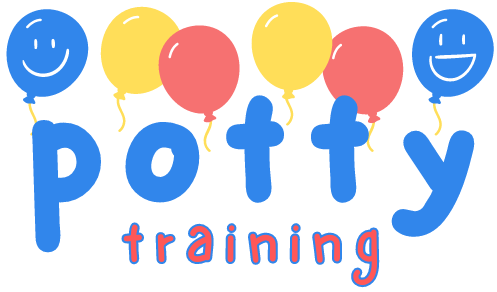Potty training can be a challenging time for both parents and toddlers. If your child doesn’t recognize the urge to pee, you’re not alone. This guide provides practical strategies for helping your child understand the signals their body is sending.
Helping Toddlers Recognize the Signs
One of the most difficult parts of potty training is getting your toddler to recognize the sensation that indicates it’s time to use the bathroom. Here are some ways to help them develop this awareness.
⭐Watch for Non-Verbal Cues
Toddlers often communicate through body language. Watch for signs like fidgeting, crossing legs, or grabbing their pants. These behaviors might indicate that they need to use the bathroom. By observing these cues, you can prompt them to use the potty.
⭐Use a Potty Timer to Create a Routine
One method to establish a routine is to set a timer to remind your child to try the potty at regular intervals. Start by setting it to go off every 20–30 minutes. This helps toddlers learn to check in with their bodies and reduces the chance of accidents. As they get better at recognizing the urge, you can increase the time between breaks.
⭐Encourage Consistent Bathroom Breaks
Along with setting a timer, encourage your child to take regular bathroom breaks during the day, especially after meals and naps. This routine helps them develop a habit of checking if they need to go.
⭐Create a Visual Chart
A visual chart showing the steps of using the potty can help your child understand the process. Include images or stickers representing washing hands, pulling down pants, and sitting on the potty. This visual aid can reinforce the steps involved in recognizing and responding to the urge.
⭐Talk About the Feeling When You Need to Go
Explain to your child what it feels like when it’s time to use the bathroom. You can ask simple questions like, “Do you feel a little wiggly?” or “Is your belly feeling funny?” This helps them start to understand the signals that mean it’s time to go.
⭐Describe the Feeling When They’re on the Potty
While your child is using the potty, talk about what it feels like to pee or poop. You can say, “Does it feel like something’s moving in your belly?” or “Is your pee starting to come out?” This encourages them to notice the sensations and connects them with using the bathroom.
⭐Use Training Pants with Wetness Indicators
Training pants with wetness indicators help parents and caregivers quickly detect when a toddler has had an accident. While toddlers might not immediately understand the visual change, this feature allows adults to notice and prompt the child to use the potty. When a wetness indicator signals an accident, you can use that moment to reinforce the idea of using the potty, helping the toddler gradually make the connection between the feeling of needing to pee and the act of going to the potty
⭐Use a Potty Seat with a Step Stool
If your child struggles with getting to the potty in time, a potty seat with a step stool can help. This setup makes it easier for them to use the potty independently, reducing the risk of accidents caused by difficulty accessing the bathroom.
Related Article: 6 Signs Your Child is Not Ready for Potty Training
How to Talk About Potty Training with Your Toddler
Discussing potty training with your child requires sensitivity and a positive approach. Here’s how to keep the conversation encouraging and helpful.
Use Simple, Familiar Words: Talk to your child using words they already know, such as “potty,” “pee,” or “poop.” This helps them understand what you mean without getting confused.
Create a Consistent Routine: Use the same terms for body parts and bathroom activities, and establish a regular potty routine, like going to the bathroom before bed and after meals. Consistency helps toddlers anticipate what’s coming next.
Involve Favorite Toys: Sometimes, toddlers feel more comfortable with familiar items. You can bring their favorite toy or stuffed animal into the bathroom to “watch” them use the potty, creating a sense of security and fun.
Stay Positive: Praise your child for trying, even if they don’t always succeed. If they have an accident, avoid shaming or criticism. Instead, offer reassurance and encouragement.
The Dangers of Holding It In
If your child holds on to their pee or poop, it can lead to discomfort and accidents. Here’s what you should know about why this happens and how to handle it:
Fear of the Potty: Some children might be afraid of using the potty. To help, make the potty area welcoming and non-threatening.
Control Issues: Holding it in might be a way for your child to exert control. Encourage independence in other areas to reduce resistance.
Potential Health Concerns: If your child experiences pain or discomfort, it could indicate a medical issue. If you’re concerned, consult a pediatrician.
Related Article: When Should I be Concerned About My Toddler Holding his Pee?
Is There an Ideal Age to Start Potty Training?
The best age to start potty training varies depending on your child. Most children are ready between 18 months and 3 years old. Starting too early or too late can lead to complications:
⭐Starting Too Early
If you start potty training before your child shows signs of readiness, it can lead to frustration and regression. Look for signs like staying dry for longer periods or showing interest in the potty.
⭐Starting Too Late
Delaying potty training can lead to a longer, more challenging learning process with increased resistance. Finding the right time to start is key, based on your child’s readiness and developmental milestones.
Starting potty training too late can also impact your child’s daycare or preschool experience, as many facilities require children to be toilet-trained. This can lead to complications with participation in certain activities and routines and may require extra attention from caregivers.
Conclusion
Potty training can be a challenging journey, especially if your toddler doesn’t recognize the urge to pee. By using these tips and approaches, setting a routine, and providing positive reinforcement, you can help your child successfully navigate this important milestone. Remember to be patient, stay positive, and offer encouragement throughout the process. With time and practice, your child will eventually get the hang of it.

